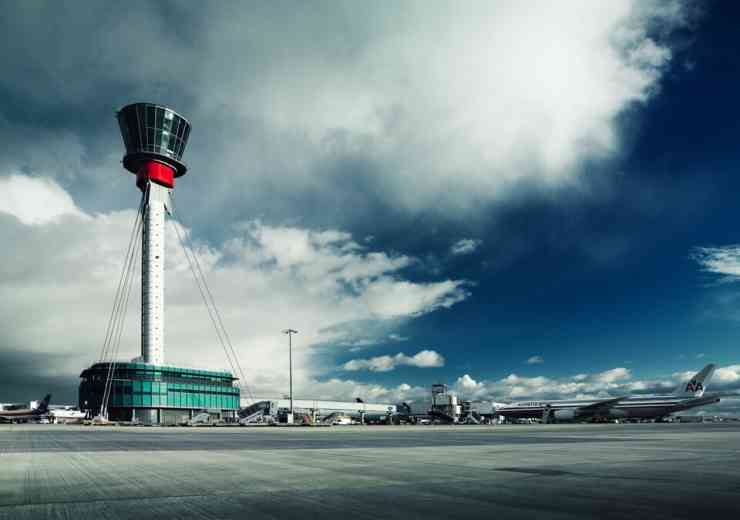
How the defence sector can take its IT to the next level
Digitalisation is integral to defence. It’s a fact keenly felt by the Ministry of Defence (MOD), reflected in the launch of its plans last summer to build a ‘digital backbone’ and invest £1.6 billion in digital, data, and cyber security over the next ten years.
But the MOD won’t be building from scratch. Along with other public sector spaces, the defence industry has turned to digital tools for a while now, which among other benefits, have helped them optimise online collaboration, navigate the severe disruption of the pandemic, and work with greater precision and accuracy. This is a crucial part of minimising costs and maximising value against a backdrop of increasing pressure to ‘do more with less’.
However, the development of digital practises within defence doesn’t come without its problems. Integrating innovative, new technology with legacy systems is always a difficult task, and consolidating these will be one of the biggest challenges for defence as it sets about shaping its IT future.
But it’s not the only area defence organisations need to turn their attention towards. When it comes to creating this digital future, there are several key points defence needs to address. In our recent research, we took the pulse of industry experts and honed in on these points to uncover opportunities to resolve inefficiencies and supercharge growth.
Here are five areas the defence sector should focus on to ensure its tech is meeting its digital potential—citing statistics from our Shaping the future of IT in defence 2021 survey report.
1. Consolidation
As highlighted above, consolidation should be one of the top priorities for defence. An overly complex IT infrastructure allows more opportunities for errors and inefficiencies, which can obscure visibility.
Our research found defence professionals recognise the benefits of consolidation. Almost all survey respondents (90 per cent) stated they were already benefiting from a consolidation solution or expected consolidation to bring benefits in the future. The highest-ranking perceived benefit from consolidation was the ability to collaborate more effectively with colleagues (96 per cent)—which is understandable due to the shift to remote and hybrid work. This benefit was closely followed by the ability to gain a more centralised overview of applications, data, and users (95 per cent).
Yet, despite this, our survey found that almost half of the defence sector (43 per cent) has yet to look at IT consolidation as a formal initiative.
It’s clear there’s work to be done in overcoming reticence around consolidation, while raising awareness on the topic. A good place to start may involve addressing some of the barriers to adoption. The two biggest barriers revealed in our research were the perceived cost of change (60 per cent) and the risk of service disruption (58 per cent). If defence wants to reap the benefits of IT consolidation, then it needs to think deeply about myths and attitudes around these barriers, along with considering the costs and risks of not addressing consolidation opportunities.
2. Flagging and minimising risk factors
As IT networks and capabilities have expanded in the defence sector, so has its risk.
Security is, understandably, one of the top issues, with 45 per cent of respondents ranking it as one of the top three challenges of their current IT environment—but concern around interoperability was identified as the biggest risk factor (51 per cent) by professionals in our survey.
This speaks to the collaboration challenges outlined by the responses to our consolidation questions, and it makes sense—as defence organisations have rushed to keep up with tech development, many have onboarded niche solutions for specific problems but then have run into issues around integration.
Other risk factors identified include problems around managing legacy technology and the challenges of maintaining easy oversight of systems.
These findings demonstrate if defence is to make the most of its IT, then it needs to properly structure and manage its systems—both in ensuring its network and digital assets are safe, but also in streamlining its IT ecosystem.
3. Automation
IT automation is a hot topic across many sectors and there's a good reason for it. Automation takes over basic tasks to free up professionals’ time for more complex tasks, allows for reduced resolution times through automatic alert features, and cuts down on errors caused by manual data entry.
This is another area where defence is holding itself back.
Our survey found only six per cent of defence professionals say their organisation has been able to automate all day-to-day, repetitive tasks to free up teams’ time to focus on more meaningful work. And around one in three (30 per cent) said their organisation hadn’t automated any tasks.
Consequently, 34 per cent of respondents reported spending a significant proportion of their working day dealing with digital performance issues, ranging from one-fifth (21 per cent) to three-fifths (60 per cent) of their time. Twenty-six percent said they don’t know how much time they lose.
Encouragingly, however, there appears to be a recognition within defence that automation can help and there are stirrings of change. Nearly half of respondents in our study said they believe they’re spending between 21 per cent and 60 per cent of their time on tasks that could be automated and 40 per cent report their organisation has undertaken a fair degree of automation.
4. Cloud adoption
Cloud migration is another key area of focus for almost every industry, and this should include defence.
Cloud adoption supports organisations with remote and hybrid working and bringing backup benefits, reduced IT infrastructure costs, and assisting with data storage. However, only 19 per cent of defence professionals in our survey said their organisation had completed their cloud adoption strategy, meaning most organisations are missing out on the full benefits of cloud technology.
Although cloud migration offers great growth potential for defence, the sector has understandably big concerns around security needing to be addressed and managed. Security was identified by 74 per cent of professionals as a challenge in achieving a complete, cloud-first, collaborative workplace and so choosing the right cloud partners will be of utmost importance to defence organisations. Although important, cloud adoption isn’t something to thoughtlessly rush into and organisations should ensure they’re getting expert, comprehensive advice when investigating potential cloud systems.
5. Maintaining momentum
The pandemic enforced a digital acceleration but while restrictions lift, defence shouldn’t let go of this momentum.
Our survey promisingly showed 84 per cent of defence professionals say their organisation is well positioned to adapt their IT environment rapidly, as and when needed. However, almost three-quarters of respondents (73 per cent) reported the defence sector is no further ahead than other sectors in its IT development journey. If the defence sector wants to fulfil the promise of its digital future, it can’t afford to become complacent and must maintain the drive for tech innovation.
Written by By Charles Damerell, Senior Director UKI at SolarWinds.
















